Sharkalishharri Cylinder Seal From The Fifth King Akkad Dynasty
A. Sutherland - AncientPages.com - The Sharkalishharri cylinder seal, like many other similar objects from the Uruk period, is an impressive example of the technical performance and the complex motives presented on it.
 Cylinder-seal of Sharkalisharri, Akkadian period (23rd century BC), Mesopotamia – made of chlorite. Credits: Louvre Musée
Cylinder-seal of Sharkalisharri, Akkadian period (23rd century BC), Mesopotamia – made of chlorite. Credits: Louvre Musée
The cylindrical seals that appeared at the end of the Uruk period (c.3500-3100 BC) began to be used to seal the first written documents.
This chlorite cylinder seal from about 2300 BC reveals the 5th King of Akkad and other scenes. The inscription reads, "the divine Sharkalisharri, king of Akkad, Ibni-sharrum, the scribe, is his servant."
Sharkalishharri (Shar-Kali-Sharri) was the king of the Akkadian dynasty, the son and successor of Naram-Sin, who reigned from C. 2217-2193 BC. He took over the Akkadian Empire after the 37-year reign of his father, Naram-Sin. At that time, his people were harassed by the constant invasions of the Guti (also known as Gutians or Guteans. These people specialized in the war of the driveway.
During his 25-year reign that lasted until 2193 BC, Sharkalishharri did not have any success during the invasions of the Guti people.
This type of struggle was due to the geographical location of the place of settlement of the Guti people - the Zagros Mountains. Their main target was the large herds of Akkadian cattle.
 The impression of the Sharkalisharri cylinder seal, ca. 2183- 2159 BC during Akkadian, reign of Shar-kali-sharri. Mesopotamia. Cuneiform inscription in Old Akkadian. Credits: Louvre Musée
The impression of the Sharkalisharri cylinder seal, ca. 2183- 2159 BC during Akkadian, reign of Shar-kali-sharri. Mesopotamia. Cuneiform inscription in Old Akkadian. Credits: Louvre Musée
The cylinder seal is tiny (only 3.9 cm high, (1 1/2 in.); 2.6 cm in diameter (1 in.), still, it carries an important message because it's a unique signature of its owner, the divine protection or
Filling motifs – figures or objects depicted in the spaces around the main scene – are another common feature of cylinder seals.
The print left by the rolling of these miniature bas-reliefs on the soft clay of the tablet reveals a rich iconography that varies with the different epochs.
Thus the dynasty of Akkad (2340-2200 BC), stone-cutters displayed a certain tendency for mythological scenes. The seal depicts two naked figures (heroes) looking straight at us and holding two jars, and between the individuals, there are standing two water buffalos carrying the inscription.
Cylinder seals were usually made of stone. They were engraved and specially designed to be rolled into clay to leave impressions. The engraved images, and usually text, were carved in reverse so that they faced the correct direction when rolled out onto clay. Engraved cylinder seals were very popular and frequently used in the ancient Near Eastern world.
Their earliest examples used mainly magical, geometric, or animal patterns. Later seals incorporated the owner's name and depicted a variety of motifs. Both their use and fashioning were widely adopted by surrounding civilizations, including Egypt and the Indus valley.
It had several functions, such as a protective amulet function regarding persons and property, authentication of written and significant text and contracts, or as an identity mark of the sender to prevent tampering with containers and sealed doors which were often worn on a necklace or a pin.
The loss of a cylinder seal had serious consequences.
Written by – A. Sutherland AncientPages.com Staff Writer
Updated on October 8, 2022
Copyright © AncientPages.com All rights reserved. This material may not be published, broadcast, rewritten or redistributed in whole or part without the express written permission of AncientPages.com
Expand for referencesMore From Ancient Pages
-
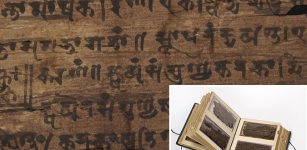 Ancient Indian Text Re-Writes History Of Number Zero And Mathematics
Archaeology | Sep 15, 2017
Ancient Indian Text Re-Writes History Of Number Zero And Mathematics
Archaeology | Sep 15, 2017 -
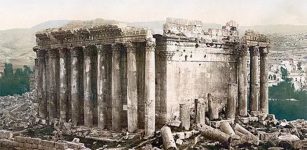 Baalbek: Were The Megaliths Put In Place Under Herod?
Archaeology | May 27, 2019
Baalbek: Were The Megaliths Put In Place Under Herod?
Archaeology | May 27, 2019 -
 Pryor Mountains Are Home To The Mysterious Little People – Native Americans Say
Featured Stories | Aug 2, 2021
Pryor Mountains Are Home To The Mysterious Little People – Native Americans Say
Featured Stories | Aug 2, 2021 -
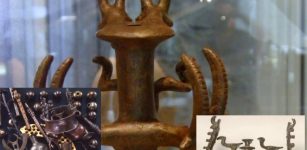 Nahal Mishmar Secrets: Priceless Artifacts In Cliff Cave Overlooking The Dead Sea
Artifacts | May 20, 2014
Nahal Mishmar Secrets: Priceless Artifacts In Cliff Cave Overlooking The Dead Sea
Artifacts | May 20, 2014 -
 Ginnungagap From Which The World, Gods, Humanity And All Life Emerged In Norse Beliefs
Myths & Legends | Dec 11, 2024
Ginnungagap From Which The World, Gods, Humanity And All Life Emerged In Norse Beliefs
Myths & Legends | Dec 11, 2024 -
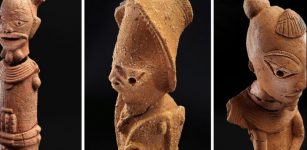 Honey-Collecting In Prehistoric West Africa From 3500 Years Ago – Pottery Examined
Archaeology | Apr 14, 2021
Honey-Collecting In Prehistoric West Africa From 3500 Years Ago – Pottery Examined
Archaeology | Apr 14, 2021 -
 Late Roman-Era Rooms, Offering Vessels Unearthed At Ancient City Of Antiocheia, Southern Türkiye
Archaeology | Oct 31, 2022
Late Roman-Era Rooms, Offering Vessels Unearthed At Ancient City Of Antiocheia, Southern Türkiye
Archaeology | Oct 31, 2022 -
 Empusa – Shape-Shifting Evil Female Demon In Greek Myth And Folklore
Featured Stories | Jun 3, 2020
Empusa – Shape-Shifting Evil Female Demon In Greek Myth And Folklore
Featured Stories | Jun 3, 2020 -
 Clovis People Invented ‘Fluting’ Ancient Stone Weaponry
Archaeology | Apr 5, 2017
Clovis People Invented ‘Fluting’ Ancient Stone Weaponry
Archaeology | Apr 5, 2017 -
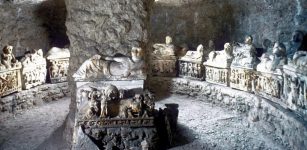 Image Of The Day: The Inghirami Tomb At Volterra, Italy
Image Of The Day | Sep 9, 2015
Image Of The Day: The Inghirami Tomb At Volterra, Italy
Image Of The Day | Sep 9, 2015 -
 Did The Biblical Magi Bring Jesus Gifts With Healing Properties?
Biblical Mysteries | Dec 24, 2017
Did The Biblical Magi Bring Jesus Gifts With Healing Properties?
Biblical Mysteries | Dec 24, 2017 -
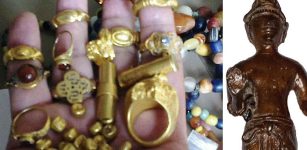 Legendary Lost Island Of Gold Of The Mysteriously Vanished Srivijaya Civilization Found Underwater
Archaeology | Oct 25, 2021
Legendary Lost Island Of Gold Of The Mysteriously Vanished Srivijaya Civilization Found Underwater
Archaeology | Oct 25, 2021 -
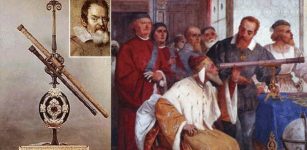 On This Day In History: Galilei Galileo Demonstrates His First Telescope – August 25, 1609
News | Aug 25, 2016
On This Day In History: Galilei Galileo Demonstrates His First Telescope – August 25, 1609
News | Aug 25, 2016 -
 Mysterious Sophisticated Gran Coclé Culture Reveals Its Ancient Secrets
Civilizations | Mar 9, 2020
Mysterious Sophisticated Gran Coclé Culture Reveals Its Ancient Secrets
Civilizations | Mar 9, 2020 -
 New Light On Foodways In The First Cities In Mesopotamia
Archaeology | Nov 21, 2022
New Light On Foodways In The First Cities In Mesopotamia
Archaeology | Nov 21, 2022 -
 Urartian Noble Woman Buried With Jewelry Found In 2,750-Year-Old Necropolis Of Çavuştepe Castle
Archaeology | Sep 10, 2020
Urartian Noble Woman Buried With Jewelry Found In 2,750-Year-Old Necropolis Of Çavuştepe Castle
Archaeology | Sep 10, 2020 -
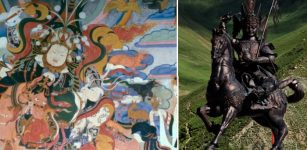 Legendary Epic Of King Gesar Who Descended From Heaven And The Ancient Tarna Monastery
Featured Stories | Nov 20, 2021
Legendary Epic Of King Gesar Who Descended From Heaven And The Ancient Tarna Monastery
Featured Stories | Nov 20, 2021 -
 Viking Artifacts Discovered In Canada Are More Mysterious Than First Thought
Featured Stories | Apr 3, 2024
Viking Artifacts Discovered In Canada Are More Mysterious Than First Thought
Featured Stories | Apr 3, 2024 -
 Unexplained Visions Of Airmen – Controversial Investigation – Part 2
Featured Stories | Feb 9, 2020
Unexplained Visions Of Airmen – Controversial Investigation – Part 2
Featured Stories | Feb 9, 2020 -
 Ancient Round Coins Were Invented To Prevent Fraud
Ancient History Facts | Mar 21, 2018
Ancient Round Coins Were Invented To Prevent Fraud
Ancient History Facts | Mar 21, 2018
